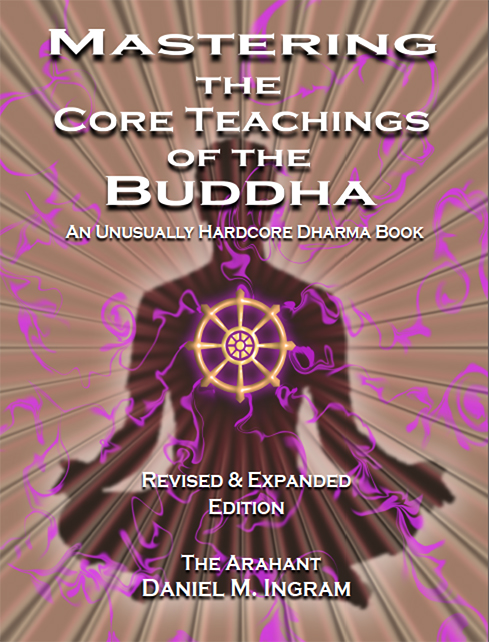44. Bodysurfing
← 43. The Early Years | 45. College and Pre-Buddhist Exploration →
I have spent hundreds of hours bodysurfing at the beach between my childhood and adult
life. I was bodysurfing this morning before I wrote this section. I started when I was probably ten years old, and spent many hours doing this every day when my family would go on beach vacations, which I have gone on at least once per year since then. Bodysurfing taught me a lot about waves. To catch a wave and have its power send you shooting out across the flat water in front of you for a long distance, you must time your jump into the wave exactly right. The wave itself must be just right, must be curling just right, and you must catch it at just the right time. The water the wave is breaking onto also must be just right: smooth, not too shallow, and at least stationary or, more optimally, pulling back out to sea, as that maximizes the speed difference between you and that underlying water, which helps you keep your head up so you can see where you are going, enjoy the speed, and steer properly.
If your timing is not perfect or the wave is not just right, either you won’t get caught by the wave or, when the wave catches you, something bad will happen, like getting forcibly tumbled into the sand below the water. If you catch the wave just perfectly, and the water below you is perfect, you can go shooting towards the beach for a long run, head held up, with great control of your direction of travel. It is a thrilling feeling. I bodysurf with one hand out in front to steer and one hand below me to give lift to my head so that I can see where I am going, and I prefer that greatly to the style where you are head-down in the water. Head-up bodysurfing makes for much longer, faster, more enjoyable rides.
To feel all the conditions simultaneously to catch just the perfect wave at just the right time with just the right underlying water requires modifying your brain and attention such that you become a wave-reading creature rather than one concerned with anything else, as you quickly learn the potentially painful consequences of getting it wrong. While some of this eventually becomes intuitive, it requires great immersion in the moment. Your feet and legs feel when the water just above the sand is pulling back towards the sea. Your torso and arms can feel the right moment to jump into the wave on the surface. Your eyes become attuned to the exact curl of the waves coming towards you and the depth of the water you might be hurtling over. You can see exactly the angle of the breaking wave and whether there are other waves that might interfere with that wave, either by coming into it sideways or running over it. Your ears hear waves behind you as you finish your run such that you can avoid being slammed down into the sand when you try to stand up. You also must watch for those around you such that you don’t crash into them. That is a lot to pay attention to—a rich and engaging world of forces, movements, tensions, fluxing, and flowing to get lost in.
When you get it just right, feeling the perfect convergence of forces and fluxing, you are richly rewarded, as the power of the wave catches you, and you shoot towards the beach. That word “convergence” is important, as this style of bodysurfing requires everything to be just right for it to work properly. When you get it wrong, sometimes you just miss the wave, and sometimes the wave puts you through the spin cycle and possibly drives you to the bottom. The larger the waves, the greater the reward, but also the greater the punishment when you have improperly gauged all the factors, and the potential to get badly hurt or die is very real. I have bodysurfed on waves whose curl was up to about eight feet high above the surface of the underlying water, but wouldn’t recommend that until you know what you are doing, and perhaps not even then. Often your positioning isn’t quite right, or the wave isn’t quite right, or the other conditions aren’t quite right, and you must either dive under or jump over that wave, which is itself another skill in wave-reading and negotiation.
I think that the many hours I have spent bodysurfing were invaluable for my vipassana practice as, once I got the hang of vipassana, I found that it was often just about feeling those same sorts of waves, convergences, and flows, but this time for objects like attention itself and the motion of energy in the body. Even space fluxes, and we can learn to ride those fluxes into perfectly converging moments of clarity just like we can learn to ride waves in the ocean. When everything converges just so, that can cause important shifts in our perspective that bring the various states of concentration and stages of insight. While I wouldn’t necessarily recommend bodysurfing, as it can be dangerous, I think that it honed underlying skill sets that translated well into meditation. If you decide to try this style of bodysurfing, please take responsibility for your own actions and safety, doing it with people around, on waves of reasonable size, on a soft, sandy beach without rocks or other hazards.
← 43. The Early Years | 45. College and Pre-Buddhist Exploration →

